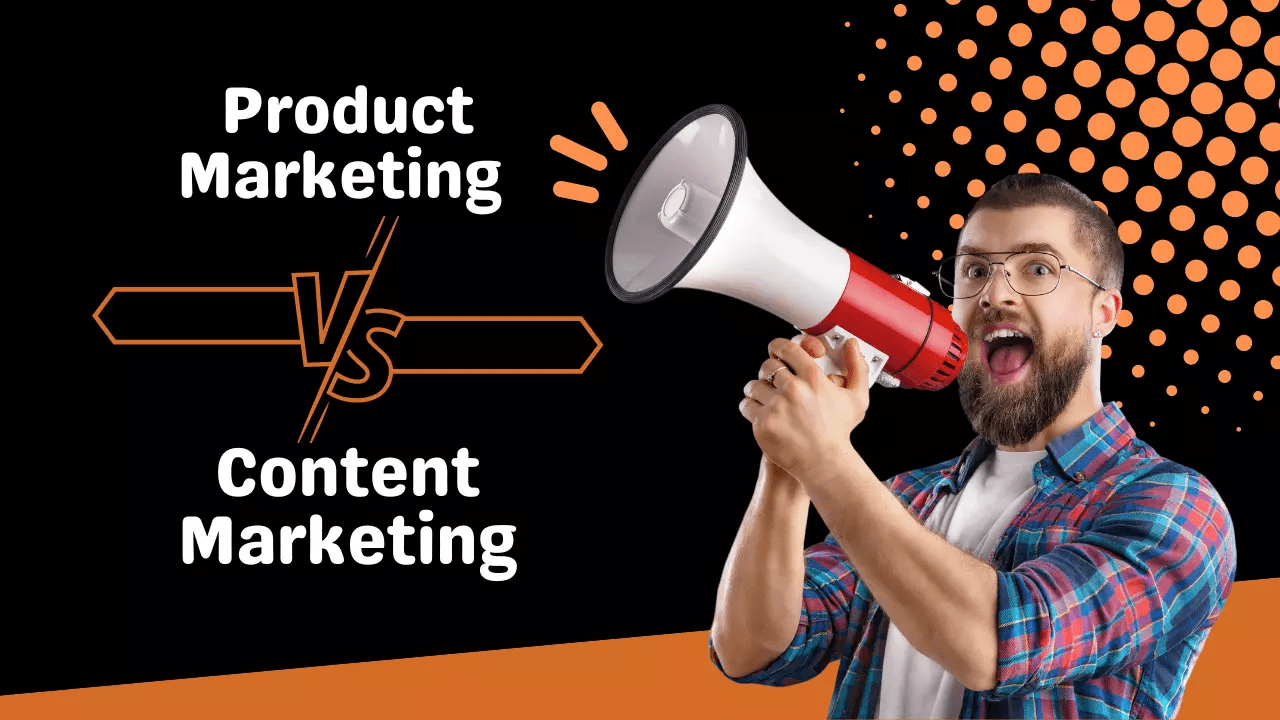No matter what we are doing, whether We are heading towards our work in the morning or just scrolling our social media accounts, by the end of the day, we encounter so many advertisements for products and services; we see advertisement boards, we see ads in newspapers, we see someone distributing printed pamphlets, we do receive calls and emails regarding buying something or availing any discount or coupon. Ever wondered what they are? We tend to get irritated by their frequency of occurrence, but they are all part of a company’s campaign to reach the masses and sell its product to as many consumers as possible. Marketing is done on such a large scale because it informs the stakeholders what the jobs to be done to rule the market and make a majority of target customers pay for our product and services.
Table of Contents
Marketing
Marketing is an essential part of a business. There is so much competition in the market, and marketing is one of the key ingredients that help any business in surviving the competition. It tells the managers what steps to be followed to outshine the opponents, and marketing’s outcome decides whether the product will sustain itself in the market or not.
Marketing means activities adopted by businesses and individuals to promote their products and services to make their products or services stand out in the crowd of homogenous products of other competitor companies. Marketing tells what the jobs to be done to enhance the product or quality of services offered to attract more and more target customers and make them pay for our products and services.
4 P’s of Marketing
- Product – What an entity is willing to offer to its target customers becomes its product or service. Marketing helps in recognizing the need of society and helps in the development of the product.
- Price– The value paid by a customer to avail of the product or services is price; price generally refers to the selling price of a commodity. It is affected and calculated by considering so many factors. Marketing helps us understand those factors and helps us to select the best price for our commodity so that it is profitable and not so expensive for our target customers as well.
- Place– This P is concerned with the distribution of any product or service. It involves deciding whether the product and services offered by the company will be online or sold physically. Marketing helps us recognize the best suitable distribution channel for our business model and commodity.
- Promotion– Advertisement, sponsorships, public relations, direct marketing, sales promotion, etc., are part of this. Marketing helps us in deciding our promotional strategies and ways to achieve the best possible outcome of those promotional activities.
The whole of Marketing revolves around these 4 Ps and helps us in knowing what the tasks to be done by us as managers and part of the company to make the most out of the four Ps of marketing. And is further divided into sub-parts like- content marketing, product marketing, social media marketing, search engine marketing, print marketing, Influencer marketing, email marketing, etc.
Marketing plays a very important role right, from the development of the product to its launch and further distribution.
In this article, we will let you know how content marketing and product marketing play their roles before, at, and after a launch.
Product Launch
Simply, the debut of a new product in the market is called a product launch. But it is a planned effort, and its main objective is to make sure that everyone working in the company, partners, and target customers get to know about the newly launched product. Launching is just as important as developing the product. By launching, you let your customers know what exactly you have built over a period of time and how your product would be beneficial for them.
Content Marketing
Content marketing is the practice of creating and distributing valuable, informative content such as blog articles, newsletters, white papers, social media posts, emails, videos, and more, with the goal of attracting and engaging potential customers. By providing content that is relevant and useful to your target audience, you can build trust and establish your brand as a credible source of information in your industry. Ultimately, content marketing can help you drive more traffic, generate leads, and increase conversions for your business.
Perks of content marketing-
- Increases online visibility of the company
- Helps in generating More leads
- Build Customer loyalty
Product Marketing
In simple words Introducing the product in the market and making it sellable is Product Marketing. Product marketing is the process of introducing a product to the market and creating demand for it. It involves identifying the target market and understanding its needs and preferences. Product marketing aims to position the product in a way that appeals to potential customers and differentiates it from competitors. By effectively communicating the product’s features, benefits, and value proposition, product marketers aim to increase sales and drive business growth. Ultimately, product marketing plays a crucial role in the success of a product and the overall marketing strategy of a company. Product marketing is the central part of the heart of a circle made of products, sales, marketing, and customers.
Importance of product .marketing-
- Ensures marketability of the product
- Supports team’s initiative
- Makes your brand unique and attracts customers
Content Marketing vs. Product Marketing:- Difference
The two sides of marketing are content marketing and product marketing. You aim to establish expertise and demonstrate your knowledge to users when you employ content marketing. In product marketing, you strive to explain to customers what your product is, how it can benefit them, and why they ought to buy it right away.
Content marketing tells us about strategies to spread awareness and knowledge regarding our product in the market.
Product marketing places a greater emphasis on employing tactics and user experiences to turn prospects into customers. Because conversions are the end aim, this is more sales-focused. It is located where your marketing, sales, and customer success teams converge. Product marketing helps us in converting prospects into consumers.
But, content marketing is primarily concerned with leveraging content to inform, engage, educate, and build relationships with your target audience. Sales may not be the ultimate objective here, but developing trust and awareness among customers regarding the brand.
Content Marketing vs. Product Marketing – Before launch
By persuading leads to buy the product, product marketing outperforms content marketing.
This, more than any content marketing technique, calls for intensive customer research.
It does not undercut content marketing, which is crucial for participating in industry discussions, developing the website with applicable and well-liked keywords, and providing solutions to client issues.
You incorporate offline customer behavior and patterns in your product marketing approach, conducting interviews and developing new user personas for a thorough market analysis.
You need a solid product positioning statement to develop a successful product marketing campaign. This statement can be developed by asking yourself the following questions:
- Who is your ideal client?
- What issues does your solution address?
- How does it generate a unique experience from what your rivals offer?
Content Marketing vs. Product Marketing- at launch
Product marketing tactics, as opposed to content marketing, give immediate results to draw attention to your product launch,
where developing a strong brand value on search engine results in pages takes months of engagement.
Some tried-and-true strategies for a successful product launch buzz include social media advertising, targeted advertisements, and offline customer engagement through the sales team.
The sales outreach team can generate excellent leads thanks to content marketing initiatives because it tells us how to generate more leads, and those devoted subscribers to the newsletter and followers on social media become the target market.
Instead of sending out cold emails, this fosters a warm connection that increases conversions.
Sales leads won’t anticipate receiving responses they can easily find through Google searches, just like content leads; the salesperson must create sales enablement materials, such as sales decks and specifications.
Content Marketing vs. Product Marketing- after the launch
When prospects reach this stage of the product lifecycle, they have already made a purchase, and content marketing can now start to win.
Yet, it has a distinct target market and a wide range of product functionality, where client onboarding takes place.
Setting up onboarding outreach emails and in-app messaging strategies that relate the appropriate features to the appropriate customer issue is necessary for this.
After fully integrating your product into your customers’ workflows, you can cut back on communications rather than completely discontinue them because you still need to keep them informed about any new updates and features of the product. This also demonstrates to them that the business values their feedback.
You must innovate your product marketing strategies by carrying out online client surveys. It enables you to monitor fresh customers.
Jobs to be done: before, at, or after a launch
Jobs to be done is a business theory that tells us about “Why do customers buy products and avail any services?”
Jobs to be done are based on the notion that people buy products to get a job done.
This Jobs to be done theory has originated from the concept of Origin-driven innovation.
Jobs to be done theory is also known as jobs theory. As per the jobs to be done theory, consumers don’t buy products; instead of buying, they “hire” it for two reasons-
- Fulfilling any desire of the consumer
- Solving any problem of the consumer
So basically, this theory helps us understand what the jobs to be done by our product and services are so that they can fulfill above mentioned two needs of the consumer so that a consumer is convinced to purchase (hire) our product or services.
So it becomes very much necessary for any organisation to find out what jobs are to be done by their product in the market.
Jobs to be done (before the launch):– Jobs to be done theory makes us think about our product the way customers do think about it. So before the launch, it will help us to develop the best product which can create curiosity in the market. Before the launch, you can collect information about how to make your product a priority for consumers to spend their wealth.
Jobs to be done (at launch):- The product should match the expectations of consumers. They must receive what they have been promised by the consumer before the launch of the product. Curiosity among consumers must sustain.
Jobs to be done (after launch):- After the launch of the product, feedback should be taken from consumers, and constructive criticism should also be accepted and worked upon to survive in the market for the long run. This theory helps us collect insights about which different products are considered by the consumer as competitors of our product to “get the job done.”
Conclusion
This leads us to the conclusion that developing a solid and proven marketing plan is the first step to successful product launch marketing, featuring a flexible blend of content marketing and product marketing initiatives. Both marketing styles convey what should be the approach of different individuals in the organization to achieve the organizational goal together.
Although product marketing is directed at people at the bottom of the funnel, content marketing initiatives track top-of-funnel clients, which makes combining them for the best product launch strategy simple. Don’t overdo the top-funnel content to maintain balance. The content might overpower the bottom funnel and sales tactics, which should guide clients for the reasons why your product is a good fit for their problem.
In this manner, the marketing materials for your product and content can contribute to the creation of valuable marketing assets that may influence customers to purchase your goods.

I am a passionate, adventurous, and insatiate learner who loves to write about the latest technology trends. My experience working in an MNC has motivated me to understand that there are certain niche requirements for writing strategically about brands’ messages towards people’s interests which I’ve mastered over time through trial and error of many projects under various clients across diverse industries. It is my honest effort to put my experiences and knowledge of industry towards readers.






